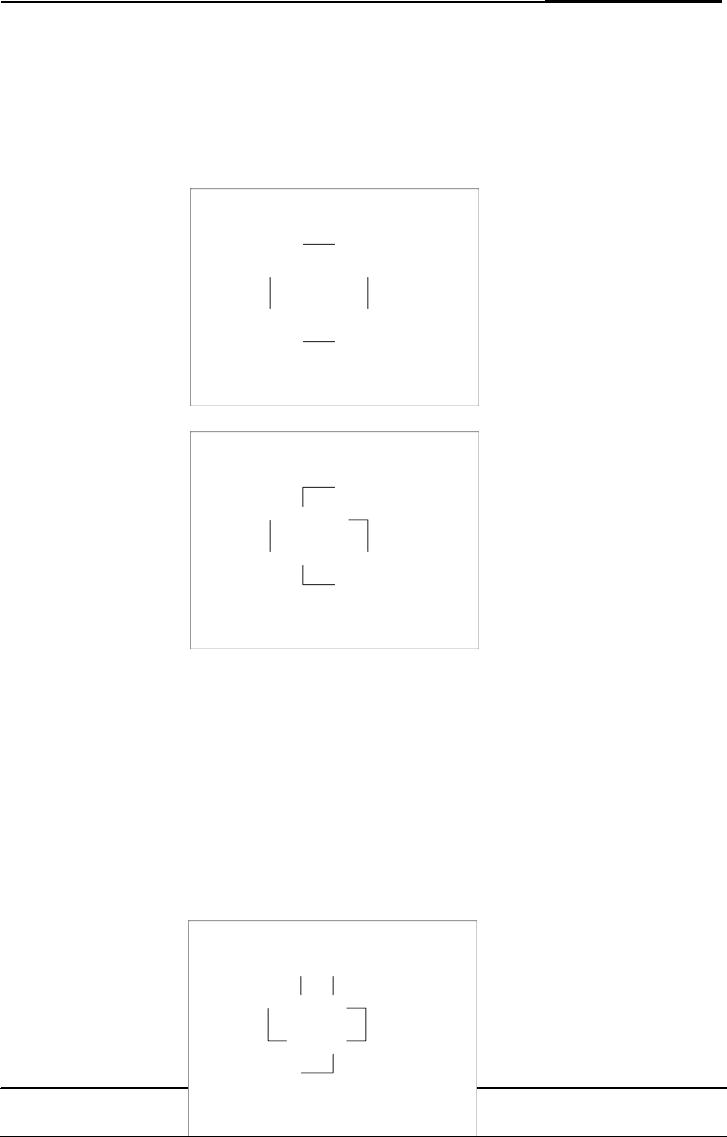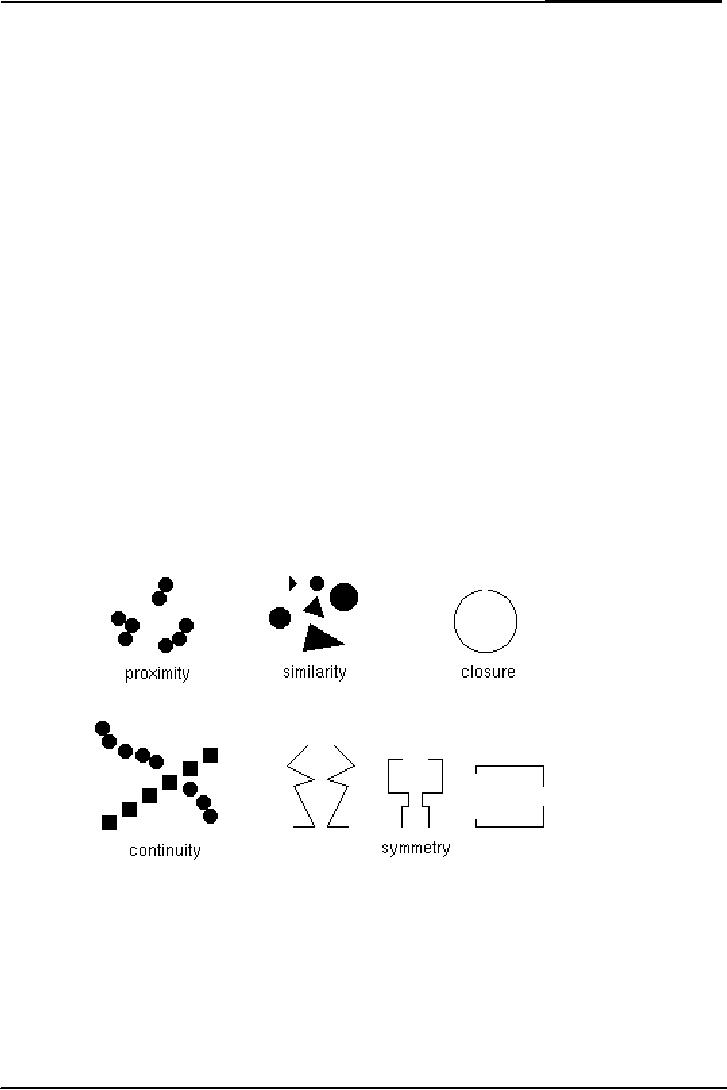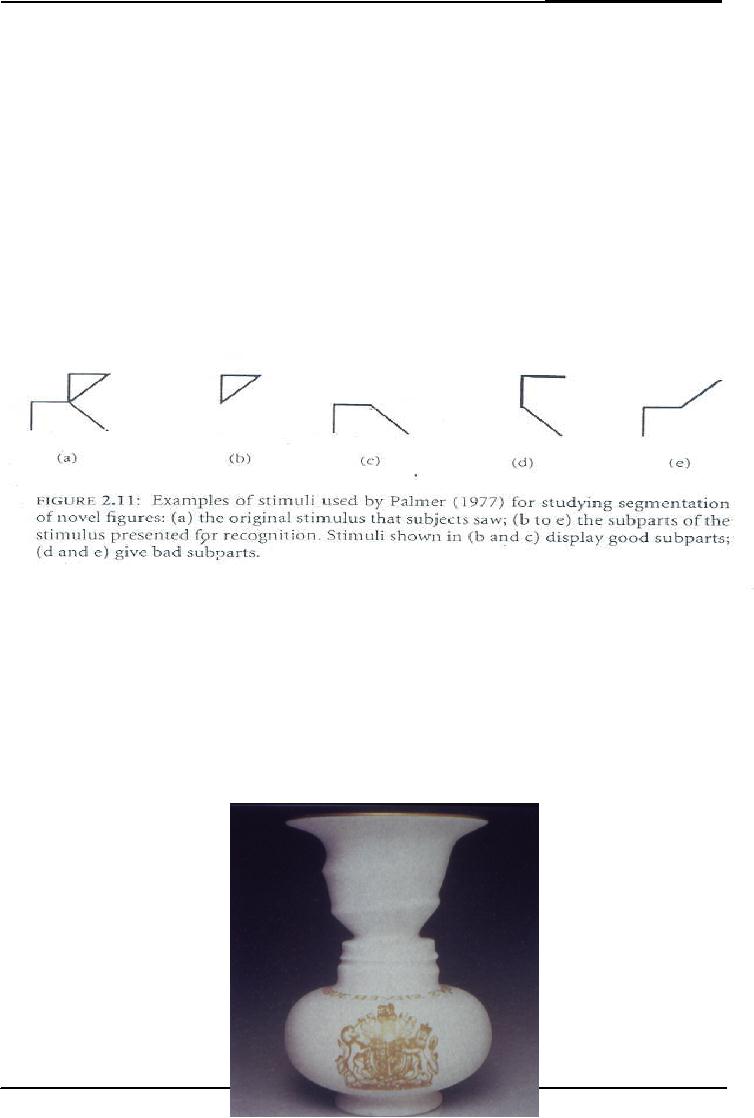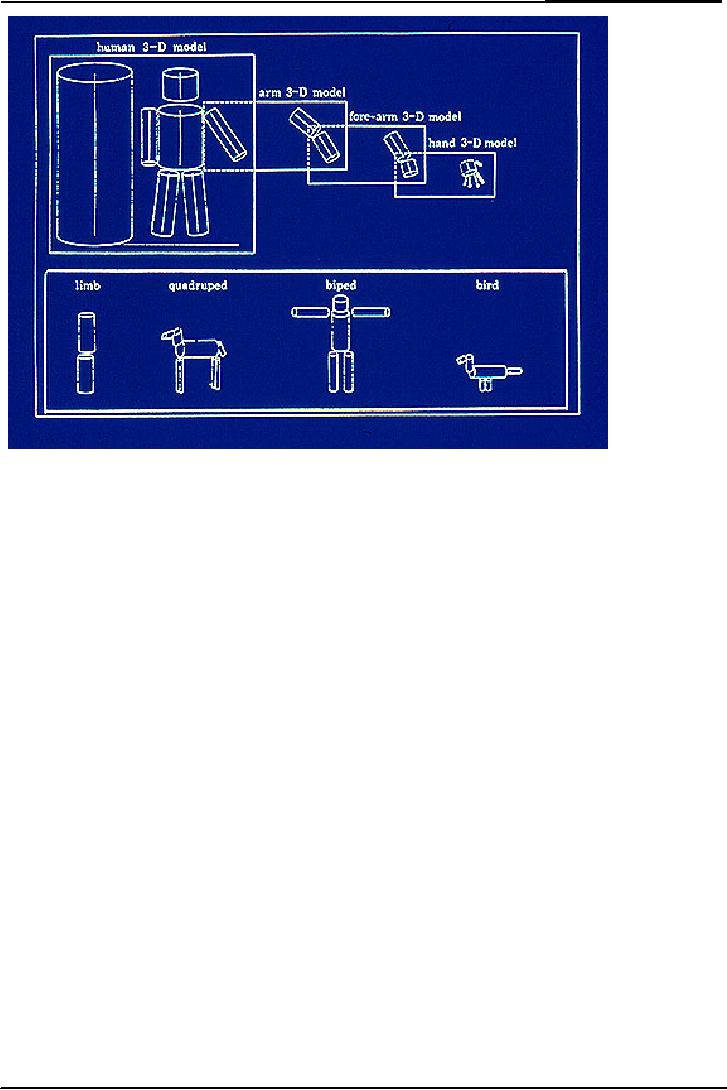 |

Cognitive
Psychology PSY 504
VU
Lesson
18
PATTERN
RECOGNITION (continued)
Gestalt
Theory of Perception
Gestalt
principles are basically
principles of perception.
This
figure is consisted on four
lines two are horizontal
and two are vertical.
But some people
may
be perceived it like a
cross.
People
perceive these figures
differently.
There
are more chances this
figure is perceived as
cross.
55

Cognitive
Psychology PSY 504
VU
This
following pattern may be
perceived as square. Some
can also perceive it as
cross.
So,
it is human tendency to complete
the figure even some
information is missing.
People
perceive it as square even
lines are not
completed.
Gestalt
principles of Organization
Most
common principles of gestalt
theory are;
Proximity
56

Cognitive
Psychology PSY 504
VU
The
law of proximity says that
items which are close
together in space or time
tend to be
perceived
as belonging together or forming an
organized group.
Similarity
This
law says that same
things are considered one
thing. Similar items tend to
be
organized
together.
Good
continuation
The
tendency to perceive a line
that starts in one way as
continuation in the same
way.
Closure
It
refers to perceptual processes
that organize the perceived
world by filling in gaps
in
stimulation.
Good
Form
It
is a type of closure. We fill in
the gaps perceive form
rather than disconnected
lines.
Symmetry
It
says that there is a
tendency to organize things to
make a balanced or
symmetrical
figure
that includes all the
parts.
Some
more examples
These
are examples of gestalt
principles.
Queen
Elizabeth's vase
It
is a gift that was given to
the Queen Elizabeth on her
silver jubilee. It is a vase
but we perceive
it
as a figure of two faces. We
change background in figure
and figure into background.
Figure
57

Cognitive
Psychology PSY 504
VU
and
background is very important
concept in Gestalt theory.
This is crucial concept in
visual
perception.
Palmer
(1977)
Palmer
(1977) studied subjects'
recognition of figures such as
the ones in following
figure.
He
first showed subjects
stimuli such as (a) and
then asked them to decide
whether fragments
(b)-(e)
were part of the original
figure. Stimuli (a) tends to
organize itself into a
triangle and a bent
letter
n. Palmer found that
subjects could recognize the
parts most rapidly when
they were the
segments
predicted by the Gestalt
principles. Thus we see that
recognition depends critically
on
the
initial segmentation of the
figure. The figure
is;
Object
Perception
The
basic idea is that a
familiar object can be seen
as a known configuration of
simple
components.
Marr
& Nishihara (1978) purposed
that familiar objects can be
seen as configuration of
simple
pipe-like
components. For instance, in
the following figure the
human model is
presented.
Different
types and sizes of cylinders
make a human model. We
perceive these cylinders
as
human
model. The diagram of bird
is also consisted on cylinders.
Different sizes, types
and
shapes
of cylinders are used to
make different diagrams. It is a
Computer model.
58

Cognitive
Psychology PSY 504
VU
Another
contribution was made by
Biederman in 1987.
Biederman
(1987) has proposed that
there are three stages in
recognition of an object as a
configuration
of simpler components.
1.
Segmentation
into sub-objects
2.
Classify
the category of each
sub-object
3.
Recognition
as a pattern made of
sub-objects
59
Table of Contents:
- INTRODUCTION:Historical Background
- THE INFORMATION PROCESSING APPROACH
- COGNITIVE NEUROPSYCHOLOGY:Brains of Dead People, The Neuron
- COGNITIVE NEUROPSYCHOLOGY (CONTINUED):The Eye, The visual pathway
- COGNITIVE PSYCHOLOGY (CONTINUED):Hubel & Wiesel, Sensory Memory
- VISUAL SENSORY MEMORY EXPERIMENTS (CONTINUED):Psychological Time
- ATTENTION:Single-mindedness, In Shadowing Paradigm, Attention and meaning
- ATTENTION (continued):Implications, Treisman’s Model, Norman’s Model
- ATTENTION (continued):Capacity Models, Arousal, Multimode Theory
- ATTENTION:Subsidiary Task, Capacity Theory, Reaction Time & Accuracy, Implications
- RECAP OF LAST LESSONS:AUTOMATICITY, Automatic Processing
- AUTOMATICITY (continued):Experiment, Implications, Task interference
- AUTOMATICITY (continued):Predicting flight performance, Thought suppression
- PATTERN RECOGNITION:Template Matching Models, Human flexibility
- PATTERN RECOGNITION:Implications, Phonemes, Voicing, Place of articulation
- PATTERN RECOGNITION (continued):Adaptation paradigm
- PATTERN RECOGNITION (continued):Gestalt Theory of Perception
- PATTERN RECOGNITION (continued):Queen Elizabeth’s vase, Palmer (1977)
- OBJECT PERCEPTION (continued):Segmentation, Recognition of object
- ATTENTION & PATTERN RECOGNITION:Word Superiority Effect
- PATTERN RECOGNITION (CONTINUED):Neural Networks, Patterns of connections
- PATTERN RECOGNITION (CONTINUED):Effects of Sentence Context
- MEMORY:Short Term Working Memory, Atkinson & Shiffrin Model
- MEMORY:Rate of forgetting, Size of memory set
- Memory:Activation in a network, Magic number 7, Chunking
- Memory:Chunking, Individual differences in chunking
- MEMORY:THE NATURE OF FORGETTING, Release from PI, Central Executive
- Memory:Atkinson & Shiffrin Model, Long Term Memory, Different kinds of LTM
- Memory:Spread of Activation, Associative Priming, Implications, More Priming
- Memory:Interference, The Critical Assumption, Limited capacity
- Memory:Interference, Historical Memories, Recall versus Recognition
- Memory:Are forgotten memories lost forever?
- Memory:Recognition of lost memories, Representation of knowledge
- Memory:Benefits of Categorization, Levels of Categories
- Memory:Prototype, Rosch and Colleagues, Experiments of Stephen Read
- Memory:Schema Theory, A European Solution, Generalization hierarchies
- Memory:Superset Schemas, Part hierarchy, Slots Have More Schemas
- MEMORY:Representation of knowledge (continued), Memory for stories
- Memory:Representation of knowledge, PQ4R Method, Elaboration
- Memory:Study Methods, Analyze Story Structure, Use Multiple Modalities
- Memory:Mental Imagery, More evidence, Kosslyn yet again, Image Comparison
- Mental Imagery:Eidetic Imagery, Eidetic Psychotherapy, Hot and cold imagery
- Language and thought:Productivity & Regularity, Linguistic Intuition
- Cognitive development:Assimilation, Accommodation, Stage Theory
- Cognitive Development:Gender Identity, Learning Mathematics, Sensory Memory